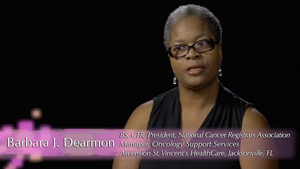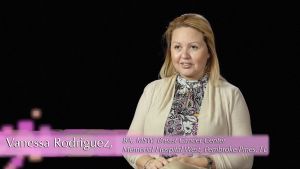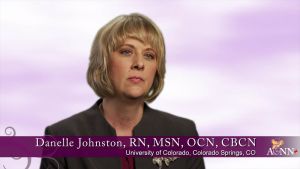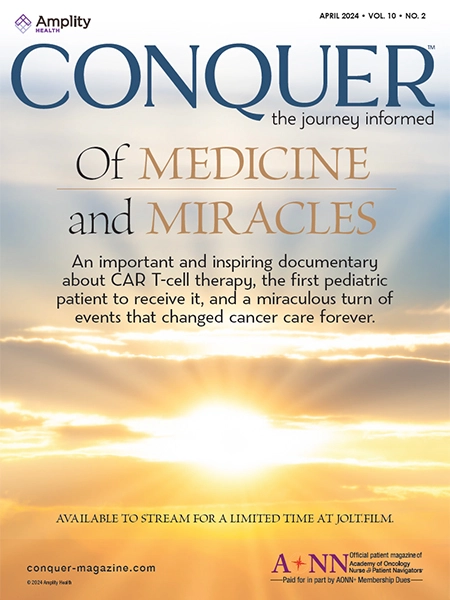Video Library Categories
- Acuity
- AONN+ Memories
- Barriers to Care
- Best Practices
- Best Practices in CAR T-Cell Therapy
- BOLD
- Breast Cancer
- Cancer Biomarkers
- Cancer-Related Legal Issues
- CAPE CLL
- Caregivers
- Case Studies
- Chronic Disease
- Clinical Pearls
- Clinical Trials
- CoC Standards
- Commission on Cancer
- Committees
- Conference Testimonials
- Coordination of Care/Care Transitions
- COVID-19
- Distress Screening
- Evidence into Practice
- Financial Navigation
- Financial Toxicity
- Genetics and Genomics
- Health Disparities
- Heroes of Hope
- Immunotherapy
- Integrative Cancer Care
- Local Navigator Networks
- Member Benefits
- Membership Testimonials
- Mental Health
- Navigation
- Navigator Anecdotes
- Navigator FAQs
- Networking and Community
- Novice Navigators
- Nurse Navigation
- Nurse Navigators Video Vignette Series
- Oncology Care Model
- ONE Award
- Operations Management
- Patient Advocacy/Empowerment
- Patient FAQs
- Patient Navigators
- Policy and Advocacy
- Precision Medicine
- Products and Devices
- Professional Roles and Responsibilities
- Psychosocial Support Services/Assessment
- Reducing Racial Disparities in Cancer Care
- Research
- Research/Quality/Performance Improvement
- Role of the Navigator
- Sexuality and Cancer
- Standardized Metrics
- Starting a Navigation Program
- Support Services
- Survivorship
- Technology
- Telehealth
- Tools and Resources
- Town Hall and Panel Discussions
- Tumor Boards
- Value-Based Care
- What's Your Why?
Best Practices
Advice for Managing Navigation Workflows
Danelle Johnston, MSN, RN, HON-ONN, OCN,Vicki Kennedy, LCSW,Lillie D. Shockney, RN, BS, MAS, HON-ONN-CG,Tricia Strusowski, RN, MS
The metrics panel provides practical advice for starting and maintaining successful navigation programs and for using the AONN+ standardized metrics to define and streamline processes across multiple disease states.
How to Assess Your Patients
Danelle Johnston, MSN, RN, HON-ONN, OCN,Vicki Kennedy, LCSW,Lillie D. Shockney, RN, BS, MAS, HON-ONN-CG,Tricia Strusowski, RN, MS
Lillie Shockney notes that are many assessment tools available to navigators. Tricia Strusowski goes on to provide examples of how her institution handles key points of contact and process mapping.
Best Practices for Developing a Survivorship Care Plan
Barbara Dearmon encourages working closely with a cancer registry to help create a survivorship care plan.
Best Practices for Identifying Barriers to Care
Barbara Dearmon thinks navigators working collaboratively with the entire health care team will reduce barriers to care.
Standardized Metrics in Navigation
Vanessa Rodriguez explains why standardized metrics are important as they help define roles and responsibilities in navigation.
A Look at the AONN+ Evidence into Practice Committee
Vanessa Rodriguez discusses the Evidence into Practice Committee and how it is working to help provide a roadmap to navigators.
Designing the Navigation Process and Gaining Support
Barbara Francks discusses the struggle and resistance at the start of her new navigator program. She explains how she hit the pavement, bringing her message to healthcare professionals and the community to educate them on the importance of the role and program as a whole.
Don't Be Intimidated by the Standard - Start Small
If you're struggling with your navigation and survivorship plan, Danelle Johnston recommends starting small. Don't be afraid to network and reach out to colleagues to see what works for them.
Assume Nothing - Just Observe
Lillie Shockney delivers her key points to beginning the navigation program.
Navigation Is the Window Into a Patient's Journey
Pamela Vlahakis is a huge proponent of multidisciplinary teams, since coordinated care is the safest and most efficient option for the patient.
Thank You to Our Corporate Sponsors and Alliance Partners!
-

Major Corporate Sponsor
-

Patron Corporate Sponsor
-

Patron Corporate Sponsor
-

Patron Corporate Sponsor
-

Industry Relations
Council Member -

Industry Relations
Council Member -

Industry Relations
Council Member -

National Alliance Partner
-

National Alliance Partner
-

National Alliance Partner
-

National Alliance Partner
Privacy Notice | Terms of Use
© 2009- DBA AONN+ Academy of Oncology Nurse & Patient Navigators® | PO Box 563, Cranbury, NJ 08512 |
AONN+ DBA AONN+ is a 501(c)(6) organization under federal tax guidelines. AONN+ Foundation for Learning, Inc. a 501(c)(3) organization under federal tax guidelines.
AONN+ Advantage, LLC, a wholly owned subsidiary of AONN+.









